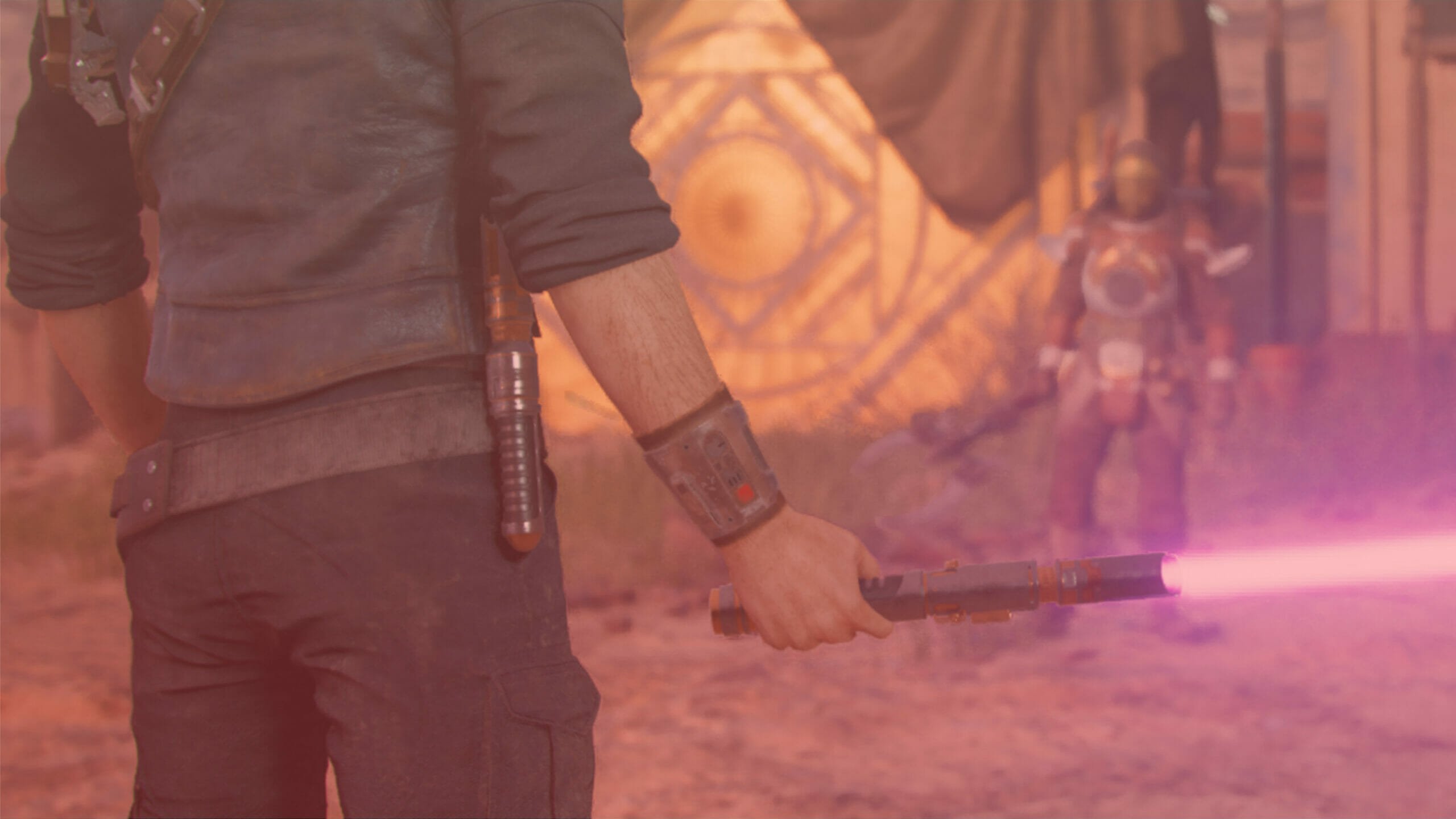Star Wars is a vast and seemingly unending franchise of intrigue, space battles, and general do-goodery against the face of evil. There is something special about the draw of space wizards and star witches coexisting in their own little bubble of MacGuffins and soap box drama. With that said, film franchises tend to translate badly when breaching the gaming market. Yet, rather interestingly, this is yet another medium seemingly mastered by the ‘galaxy far far away’, with Star Wars Jedi: Survivor beautifully driving home this point.
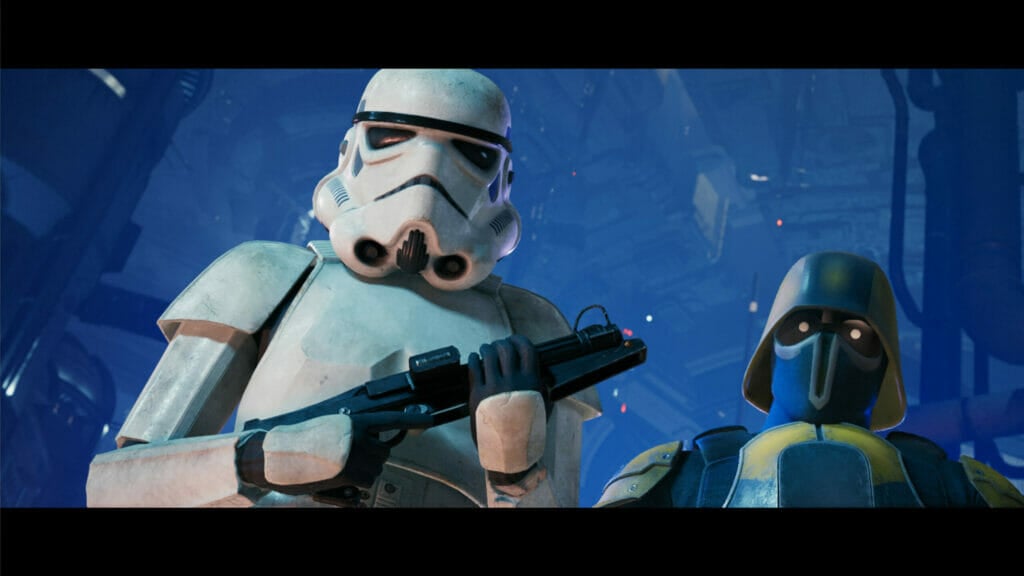
From hit first-person shooters and pixel-popping platformers, through to an iconic legacy of role-playing titles and third-person action adventures, fans are spoilt for choice when it comes to finding a Star Wars video game to enjoy. One of the current best is Respawn’s latest take on the galactic front, with many hearts having been won over with Star Wars Jedi: Fallen Order. As such, the sequel has quite a legacy to match up to. Spoiler alert: Star Wars Jedi: Survivor just might be the new gold standard.
Star Wars Jedi: Survivor takes place roughly five years after Cal Kestis, Padawan turned Jedi Knight, and his motley crew thwarted the Empire’s efforts to find a datacube filled with information pertaining to force sensitive children (looking at you, Grogu). Players once again take on the role of Cal, who finds himself struggling to find his place in a universe where he is nothing more than a wanted poster on every wall. The Empire’s growth is hitting record highs and many who have survived Order 66 [referred to as The Purge by the Jedi] have already succumbed to the many threats employed by Darth Vader and Emperor Palpatine.
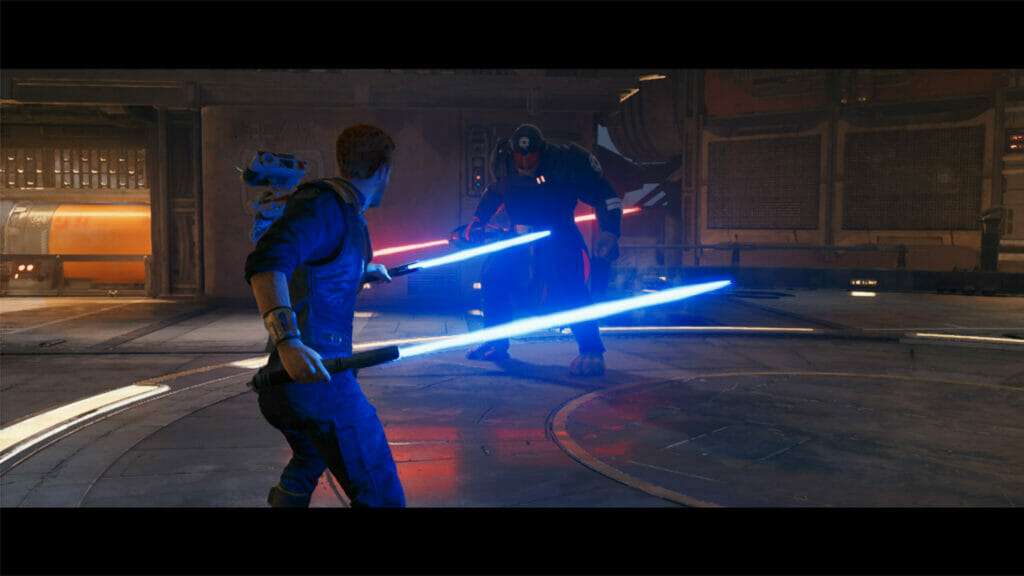
Cere, Greeze, and Merrin have seemingly gone their separate ways from the onset, leaving Cal and his effervescent droid companion, BD-1, to meet a new set of faces. Fans of Fallen Order will know how this is par for the course, with many more faces expected to join the Mantis crew throughout the campaign. While not much more can be said (the trailers already give away too much), the new villains look truly unhinged, and the story takes a massive turn by the second arc. Also, fans of the High Republic era rejoice. #thatisall
From a gameplay perspective, players can expect pretty much exactly what they have come to love (and hate) from Star Wars Jedi: Fallen Order – the game plays exactly like its predecessor, but somehow still manages to build upon it. Like Fallen Order, combat in Star Wars Jedi: Survivor is fast, frantic, and over in literal seconds – if done correctly. An accepted traditional staple in video game sequels is how protagonists simply start over with their skill sets. This is usually explained away by some arbitrary reason, but not in Survivor. Instead, Cal still knows all his learned abilities from Fallen Order and then some. Push, Pull, and Confuse have become standard use abilities in Survivor, with the sequel building upon these by allowing players to expand and master them even further. Thanks to his lightsaber, Cal can reflect shots from the get-go, and explorable abilities like Jedi jump, climbing, and swimming, are all part of his arsenal out of the gate.
Much like its predecessor, for better and worse, flashy and zoomy movesets are always a welcome sight to behold; but one of the key issues with how quick and flexible Cal seems to be, is how it becomes a challenge to learn when certain moves start and end in Star Wars Jedi: Survivor . As such, parrying and blocking reliably becomes tricky, making one of the biggest parts of combat a chore to decipher. Thankfully, Survivor brings the detachable double hilted lightsaber back, ensuring fans can enter and exit combat with any version of Cal’s lightsaber they wish, and the game expands even further on this aspect as well.
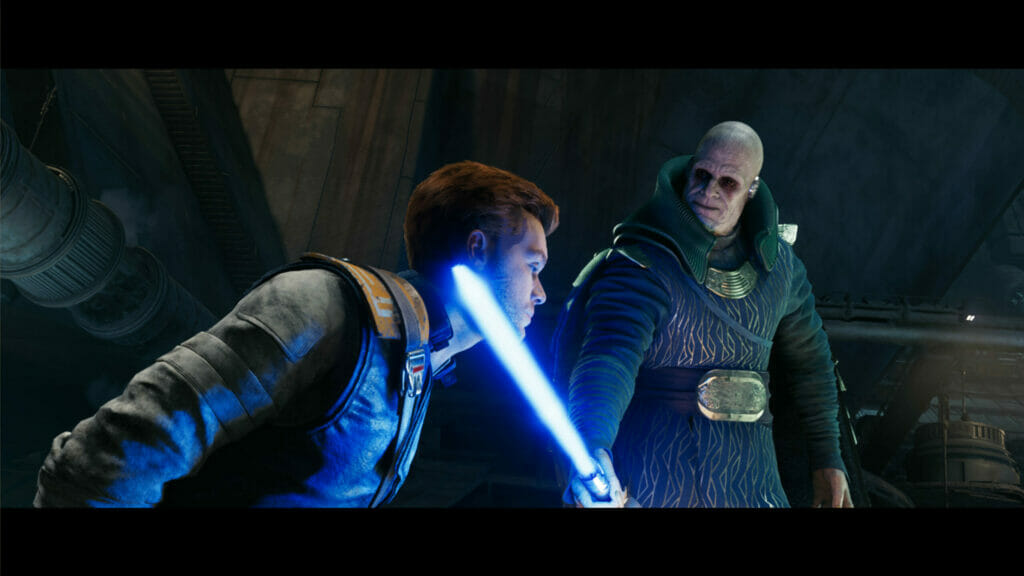
In Fallen Order, Cal’s various lightsaber modes mostly depended on what moves players used during combat. Star Wars Jedi: Survivor changes things up by introducing “stances”. Stances are governing movesets for particular versions of Cal’s lightsaber, and players can have any two stances at their disposal at all times. When the game opens up for the first time, Cal has access to the three modes introduced in Fallen Order: Single Blade, Dualblade, and Double Lightsaber. Players can switch out stances at meditation spots (think Dark Souls bonfire) as well as upgrade them to become more powerful. The three stances introduced in Fallen Order will be the main ones players use throughout most of the first arc, before unlocking two more down the road: Blaster Stance, and Crossguard Stance… and they are as awesome as they sound!
Each stance has its own pros and cons. Single Bladed mode is a good middle ground for anyone, with mid stats on all aspects, while the dual-bladed stance favours manoeuvrability and crowd control. The double lightsaber stance, on the other hand, is for hard-hitting, glass-canon type gameplay with very little range. But this is all still familiar territory for fans of the franchise. The new stances, awarded to players as the mid-game unlocks, truly sets the game apart from its predecessor. In the blaster stance, Cal takes out enemies from afar while blocking and slicing in close range thanks to an off-hand lightsaber. Crossguard stance, on the other hand, is all about slow-swinging, yet hard-hitting combos and perfect parries to take out individual foes.
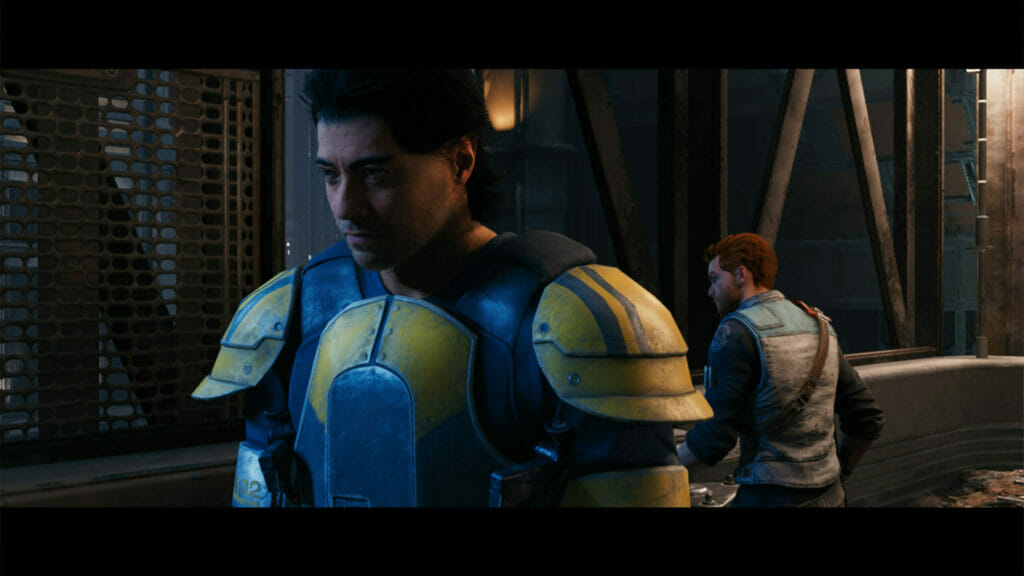
Another massive upgrade from Fallen Order are the vast number of enemies Star Wars Jedi: Survivor introduces. The first game was a masterpiece in almost every facet, but the sheer amount of repeated enemies introduced a lot of fatigue for players. Survivor, on the other hand, has a plethora of enemies unique to each explorable biome (more on this below). While the series staple battle droid, Imperial Trooper, and Raider, are common sights; the game has enough of a variety in the subtypes to keep things interesting.
In Fallen Order, players had the ability to unlock and customise Cal’s poncho, his lightsaber, and the Mantis. In this sense, customization receives a massive update in Star Wars Jedi: Survivor. Players can now customise nearly all aspects of Cal’s outfit, including his hair and beard, as well as the aforementioned blaster. Previous customisable aspects have been upgraded to include paint jobs and trimmings as well as the state and finishes the lightsaber, blaster, and BD-1 can have.
Another new aspect touted in the marketing for Star Wars Jedi: Survivor is the all new “settlement building” mechanic. As soon as Cal reaches the planet Koboh, it becomes clear how it may very well be the place Cal would like to settle. As such, the Jedi takes it upon himself to recruit non-playable characters (NPCs) to improve the state of the settlement. As players venture forth, certain NPCs will give Cal “rumours” to act on. These act as side missions and clues to valuable rewards and other NPCs. Some of these NPCs will bring true value to Koboh (such as new shops and even more side missions) while others will just fill the settlement up to make it feel truly lived in. It needs to be said how the whole settlement mechanic is a lot less hands-on than some of the marketing may make it out to be, but it keeps players involved enough not to feel like it is some throwaway gameplay detail.
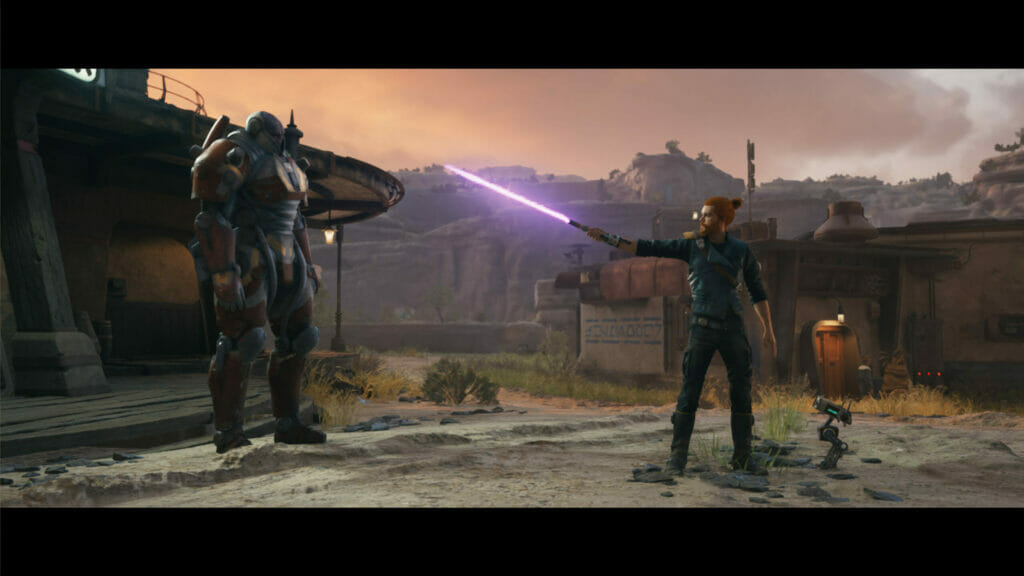
As expected, Star Wars Jedi: Survivor has upped the ante in all aspects, including its hub. The game kind of forces Koboh down player throats the moment it opens up, but it also makes a lot more sense to have a hub on a planet made for settlement building as opposed to a small space ship with hardly a place to go. Thankfully, Koboh is much more than the arid rock and mountainous area players get a whiff of when they first set foot on the planet. This same mantra carries through to all of the explorable zones the game has to offer, and there are many.
From the Coruscant deep dive into level 2046, through to Koboh, Jeddah, and a massive moon laboratory or two, players will travel far and wide this time around, and zones are not just linear with some winding shortcuts scattered about either. Instead, Star Wars Jedi: Survivor encourages active exploration into massive and near-endless zones. There are secrets and awards around every corner while optional boss fights and unlockable content hide around every nook and cranny. It truly feels like players can explore vast stretches of planets and zones this time around, and it feels oddly refreshing, yet surprisingly daunting.
The good news is the holomap makes a return, so players can easily see where they have not explored yet, where they cannot explore yet, and what new areas have opened up from simply walking into a new region. Adding onto the experience is BD-1, who can now lend its visor to Cal for rangefinding. Players can add beacons to the holomap by highlighting certain enemies or viewpoints through the visor, making exploration all the more easy. Similarly, Respawn have scattered a healthy amount of shortcuts throughout all the levels as well, making it much easier to traverse locations a second time around, when more abilities have been unlocked. In a similar vein, players can now tame some of the beasts and alien creatures roaming around. Once tamed, these animals can be used to explore and traverse the regions in ways otherwise never thought possible. Exploration truly is a wonder in Star Wars Jedi: Survivor.
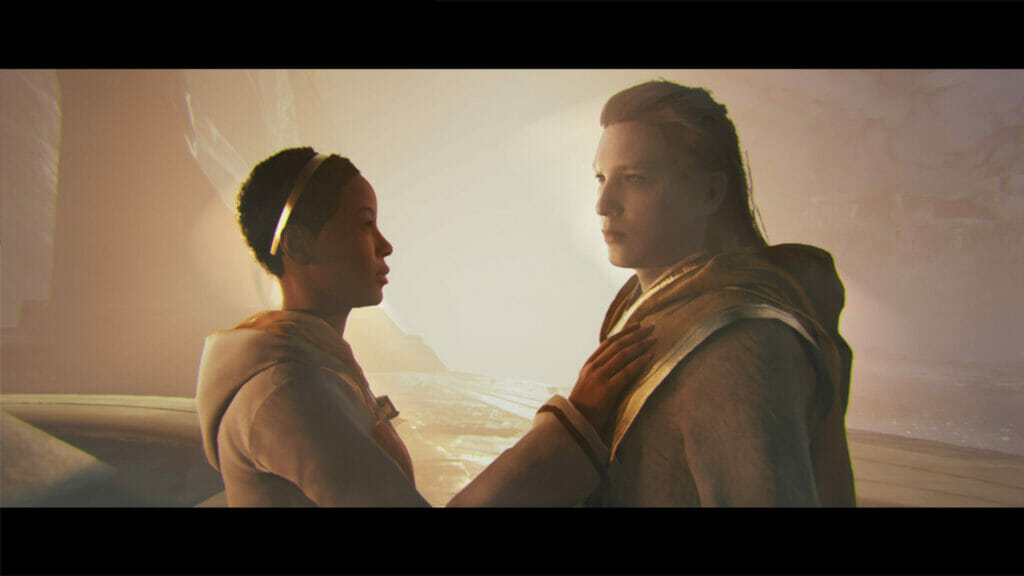
It is just a shame, then, that the game seems to have incredibly bad optimisation issues. The copy received for review was for PC, and while a recent update fixed a lot of the perceived frame drops, the game still crashed one too many times to call it a minor inconvenience. These bugs aside, loading into levels and planets takes only a matter of seconds after the initial start up process. Better still, Respawn have already promised more optimisation by the time the game releases. Only time will tell, however, whether these issues truly go away.
Optimisation aside, Star Wars Jedi: Survivor truly showcases how far Respawn have come in terms of world building and level design. As great as Fallen Order was, levels always felt too compact and linear, with very little world building outside of Cal’s force visions and enemy dialogue. Conversely, Survivor doubles down on enemy dialogue – the dialogue itself being dynamic and random – as well as world building and level design. Koboh alone constantly reminds players of the people living there; and how they have histories and backgrounds. As an example, players will meet Pilgrims who used to work in some of the many mines the world has to offer, most of whom have their own stories to tell and rumours for Cal to act on. Similarly, players will witness the dangerous desert of Jeddah at work; as Stormtroopers succumb to the fauna and flora in a bid to take control of the region. Other explorable zones, like the aforementioned moonbase, will have players encounter service droids who, for the first time in their lives, are experiencing fear and are acting out on it in ways droids would be programmed to.
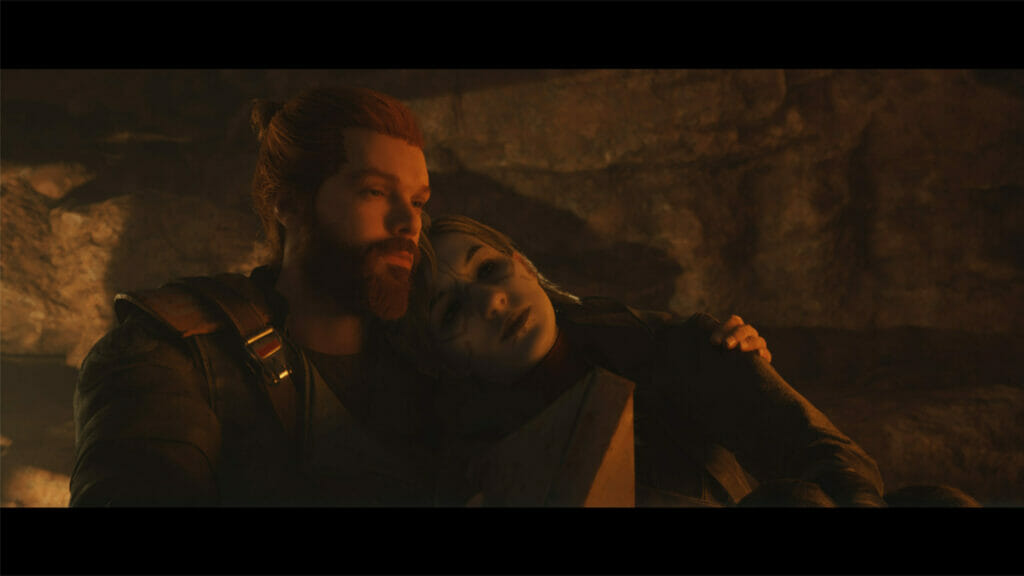
Star Wars Jedi: Survivor is, without a doubt, essential gaming for any Star Wars fan or gamer who enjoys souls-like adventures. It is a game about a Jedi who survives some of the worst trials and tribulations imposed on a person, who then goes on to rebuild and recoup his life, while showcasing to the galaxy how the Empire may not be the only answer to the universe’s problems. It is a title that keeps on giving, even when least expected. Exploration is also key this time around, with truly open zones and rewards around every corner, while the title continues to build upon every single aspect introduced in Fallen Order. While combat animations may be a lot flashier than they rightfully ought to be, the game more than makes up for it by offering players a new “stance” system, a massive skill tree based on the force abilities Cal already knows, and all new mounts. Oh, and you can pet the Bogling this time around too, so there is that. As a sequel, Star Wars Jedi: Survivor doubles down on everything that made the original so good, and offers gamers a truly exceptional experience.
Verdict:
EXCEPTIONAL
| PROS | CONS |
| Tremendous open world | Optimisation issues on PC |
| Stances help make combat feel personal | Combat takes some getting used to |
| Beautifully designed |
Title reviewed on Microsoft Windows (via Steam) with code supplied by Electronic Arts.
Review Methodology | Ethics Policy
Junior Editor at Vamers. From Superman to Ironman; Bill Rizer to Sam Fisher and everything in-between, Edward loves it all. He is a Bachelor of Arts student and English Major specialising in Language and Literature. He is an avid writer and casual social networker with a flare for all things tech related.

